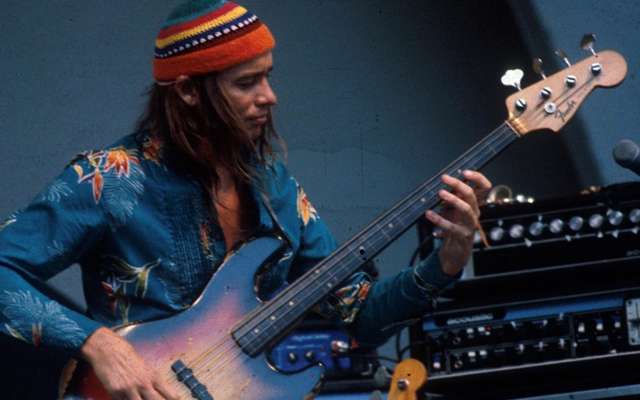
Few artists have been as monumental to the direction of electric bass guitar than Jaco Pastorius. Born in Florida in 1951, Pastorius began playing double bass after losing the ability to play drums following a wrist injury, before turning to the dark side – or going electric – as a teenager.
The Beginnings
In his youth, Pastorius was an in-demand session player, cutting his teeth with the likes of Herbie Hancock and Joni Mitchell before unleashing his full talent unto the world with a six-year stint in jazz-fusion all-stars Weather Report, where he notably performed on their classic rendition of ‘Birdland’ before leaving to enjoy a prosperous solo career.
Despite his relatively brief career, Pastorius’ influence can’t be understated – his use of harmonics, lyrical bass solos, effects and smooth, fretless runs set the standard for modern electric bass playing.
BASS GUITARS BY JACO PASTORIUS
1966 FENDER JAZZ BASS

After his double bass became warped from the humidity of his home state of Florida, a 15-year-old Pastorius saved up for months to afford a brand new 1966 fretted Fender Jazz Bass, complete with block inlays and a bound fretboard.
This bass remained Pastorius’ number one bass throughout his adolescence, playing it throughout his tenures with early groups The Woodchucks and the Las Olas Brass Band.
1962 FENDER JAZZ BASS – ‘THE BASS OF DOOM’

Renowned as being one of the most famous basses in the world, the story behing Pastorius’ number one instrument is almost as complex and mysterious as Pastorius himself. Hailing from 1962, the Sunburst Bass of Doom was supposedly defretted by Pastorius with a butter knife after buying it for $90 in the early 1970s, filling key slots with plastic wood and applying multiple coats of Poly Poxy to cover the gouges he created from his “home” work.
The Genius Sound
Despite his unprofessional guitar tech work, Pastorius’ playing on Pastorius to Doom’s bass was nothing short of genius, using his “narrow neck” and round-sounding bridge pickup to hone his style, typically heard on recordings by the likes of Joni Mitchell, Herbie Hancock and Weather Report.
While the tone of the bass and Pastorius’ expert knowledge of the instrument are of mythical proportions themselves, what’s really fascinating about this instrument is the tale of how it disappeared for more than 20 years, only to be brought home to Pastorius’ family by none other than Metallica bassist Robert Trujillo.
In New York
Shortly before his death, Pastorius discarded the fabled instrument in New York’s Central Park in 1986, where it supposedly disappeared from the face of the earth before reappearing in mysterious circumstances in 2008 by an unnamed collector.
Upon hearing news of the reappearance of the Bass of Doom, Pastorius’ family embarked on a legal battle to receive ownership of the instrument, which supposedly turned ugly and almost bankrupted the Pastorius estate.
This resulted in Trujillo, a longtime Pastorius fan, buying the Bass of Doom from the anonymous owner in order to return it to his family. Read all about Trujillio’s take on the story here, and make sure to check out Bass Player Magazine’s experience with the instrument after it re-emerged in 2008.




Stay connected